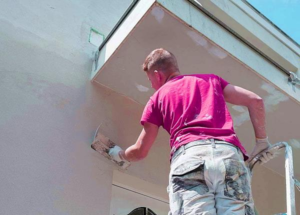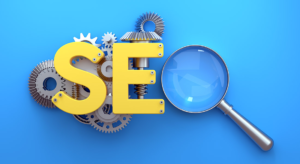Barbering is an art that outlasts trends. It’s a craft that requires dedication and hard work to master. Moreover, it’s a career that allows you to enjoy lifelong learning.
Barber St George provide haircuts, facial hair styling and shaving services. They also perform other grooming services such as beard or mustache trimming and shaping.

Barbers perform a variety of hair services for their clients. These include haircuts, shaves, and trimming facial hair. They also offer other skincare services, such as face and scalp massages and hot towel treatments. They may even give professional fittings for wigs or hairpieces. In addition, barbers must keep their workstation clean and sanitized. In some cases, they must disinfect their cutting tools after each client session. This is a demanding job that requires excellent customer service skills and the ability to work efficiently under pressure.
It is common for barbers to build a loyal roster of repeat customers and receive referrals from them. They must ensure that each client is satisfied with the results of their services, which involves listening carefully to clients’ requests and expertly executing them. This is especially important in the case of male clients, who require specialized training and expertise to cut their hair properly.
A good Barber Job Description must be clear and concise, and it should include the type of hair services that the Barber is expected to perform. It should also describe the equipment that the Barber is expected to use, such as scissors, clippers, and razors. It should also mention any specialized services, such as balding techniques or beard grooming, that the Barber is trained in.
A successful Barber must be able to handle a busy schedule, often working back-to-back appointments. They must be able to juggle multiple tasks and responsibilities, including cleaning their workstation, disinfecting tools, and scheduling appointments. They must also have the endurance and stamina to stand on their feet all day.
In addition to performing hair and skin care services, barbers must stay abreast of the latest trends in haircuts, styles, and colors. They must also be able to identify hair problems and recommend treatments that will alleviate them. They must also be able to communicate clearly with their clients and answer questions.
A skilled barber can do many things, including giving a neck and scalp massage, shampooing and conditioning the hair, and trimming beards and mustaches. In addition, they can style and trim eyebrows. Some also shave the face and neck, and provide waxing and lather treatments. Some even sell products, such as shampoos, conditioners, and combs.
Education requirements
Barbers are hair professionals who specialize in shaving, cutting, and styling men’s hair. They also provide facial and neck massages to their customers. They can be found in many beauty salons and barber shops. The education requirements for a barber vary by state, but most require at least a high school diploma or equivalent. Some barbers complete a cosmetology program in order to meet the state’s licensing requirements.
In addition to specialized training in their field, barbers must have excellent customer service skills. They should be able to listen to their clients’ needs and offer suggestions. They must also be able to perform their duties in a clean and sanitary environment. Finally, they should be able to follow all state and professional regulations when it comes to hygiene and safety.
Licensed barbers must have a sense of style and form in order to determine which styles will flatter their clients’ features and hair types. They should also be able to recognize when a particular style is not suitable for the client, which requires firmness and diplomacy. In addition to these hard and soft skills, a good barber must be creative and able to think outside the box.
While the minimum education requirements for a barber are a high school diploma or GED certificate and a cosmetology license, some people choose to attend college to receive an associate degree in cosmetology or another subject related to the field. Generally, it takes nine to 18 months to complete a barbering program, although this varies by school and location.
The best barber schools have a small student-teacher ratio and offer one-on-one instruction from experienced barbers. They should also offer a comprehensive education in the latest trends and techniques. They should also teach their students how to use and care for professional equipment, which is essential in this industry. Finally, the school should offer flexible courses and schedules to accommodate the needs of working professionals. This way, the students will be prepared for their careers once they graduate. In addition, a barber should also pursue continuing education to keep up with industry changes and to maintain their license.
Licensing requirements
A barber’s licensing requirements vary by state. In most cases, barbers must obtain a high school diploma or GED certificate, attend a formal training program, and pass a state-approved cosmetology or barbering exam. Some states may also require an apprenticeship. In addition, some barbers choose to take additional courses or workshops to stay abreast of the latest trends and techniques in their profession.
Exceptional barbers demonstrate dedication and natural talent for their craft. They have a keen eye for detail and a steady hand that allow them to execute precise cuts and shaves. They are also able to communicate effectively with clients, fostering client loyalty and satisfaction. In addition, barbers must be able to manage their time efficiently in order to meet the needs of each client.
Immigrants who are seeking to become licensed barbers must meet the requirements set by New York’s Department of State. These include proving their legal work authorization during the barber licensure process, including having a valid passport or other government-issued document that verifies their identity and legal status. They must also provide proof of their address in New York.
In addition to meeting the licensing requirements, barbers must pass a written and practical examination before they can be licensed. Many barber schools offer these exams, which are overseen by the state board of cosmetology. Some states require a minimum number of practice hours in order to receive a license.
Barbers must renew their licenses every four years. Most states have online portals to renew their licenses, which usually cost around $60. However, some states require an additional fee to retest applicants who fail the test.
There are also a variety of opportunities for immigrant students to access language-specific resources, cultural competency training, and support when they are pursuing barbering education and licensure. For example, the City University of New York offers free English language classes for immigrants. There are also other language centers, libraries, and churches that offer classes at various levels. In addition, there are a number of online resources that can help immigrant students improve their English language skills.
Salary
Barbering is a fun, creative, and flexible career. It can provide a better work-life balance than traditional nine-to-five jobs, and it offers excellent earning potential. The average barber salary has increased by about $10,278 over the past decade, making it a lucrative and rewarding profession. However, the salaries of professional barbers vary depending on location, experience, and clientele.
The first step to becoming a professional barber is attending a quality school. The right barbering school can make a huge difference in your knowledge, skills, network, job opportunities, and future earnings. Many schools offer a range of flexible education options, so you can find the one that fits your schedule.
Once you’ve completed your barbering course, you can start working as a licensed barber and earn a reasonable salary. You can choose to work for a salon or even open your own shop. Both options have their advantages and drawbacks. If you work for a salon, you’ll get the benefits of a stable income and access to employee discounts. If you’re a seasoned barber, you can also choose to work on commission and keep all the tips.
As a beginner, you can expect to make about PS40 per day in salary and around PS20 in tips. This translates to about PS10,000 per week and PS54,000 a year once you factor in the chair rental cost. To maximize your tips, it’s important to be a courteous and friendly barber. In addition, make sure you always leave a tip jar front and center.
Moreover, as a barber, you can increase your salary by investing in the right tools. For example, a quality barbering software can help you manage your business more efficiently. It can help you reduce no-shows, track customer satisfaction, and manage your finances.
If you’re an ambitious barber, you may want to consider opening your own shop. While this can be a lucrative career option, it’s not for everyone. It takes a lot of hard work and dedication to become a successful barber. However, it’s worth the effort if you love to cut hair and have the right personality.







